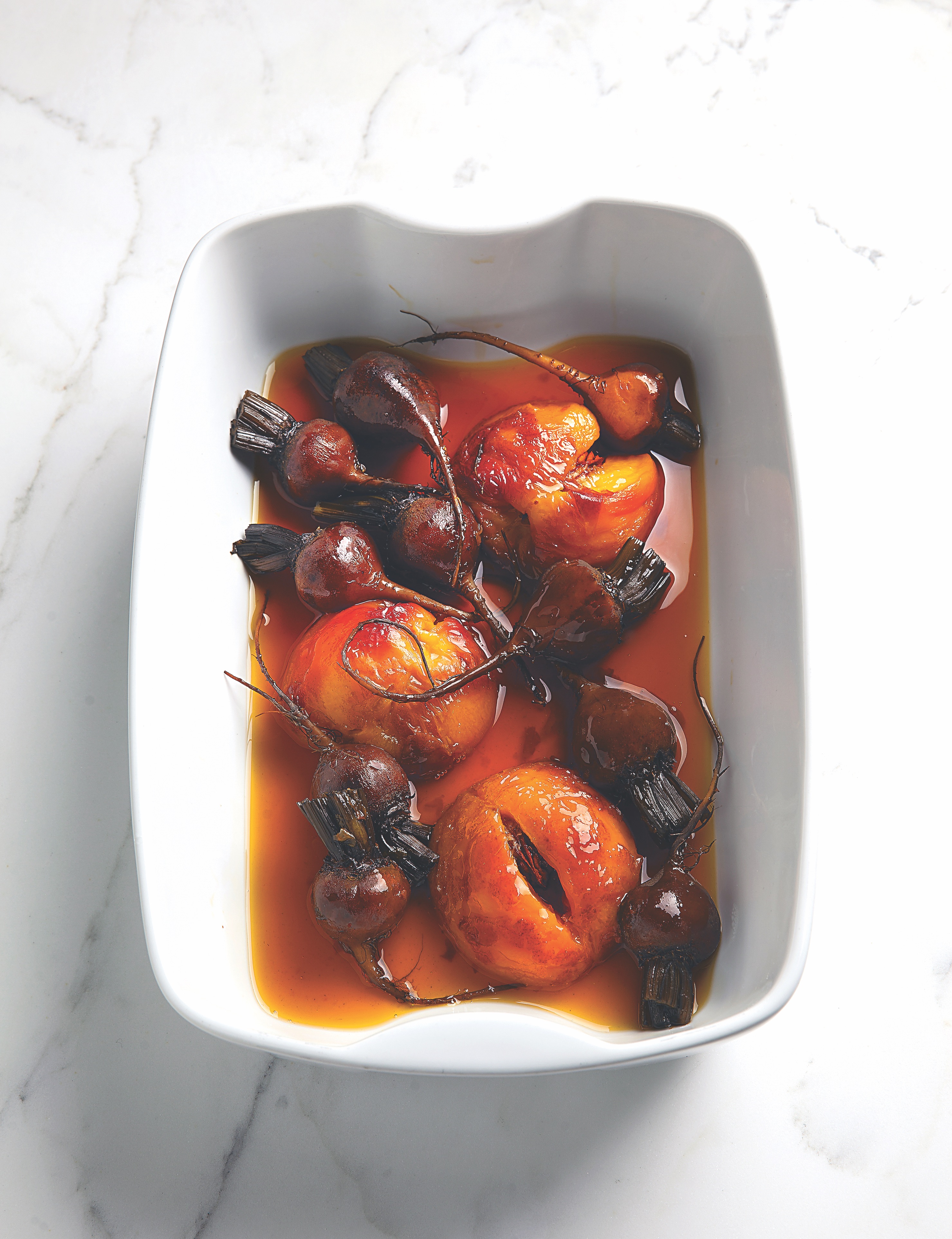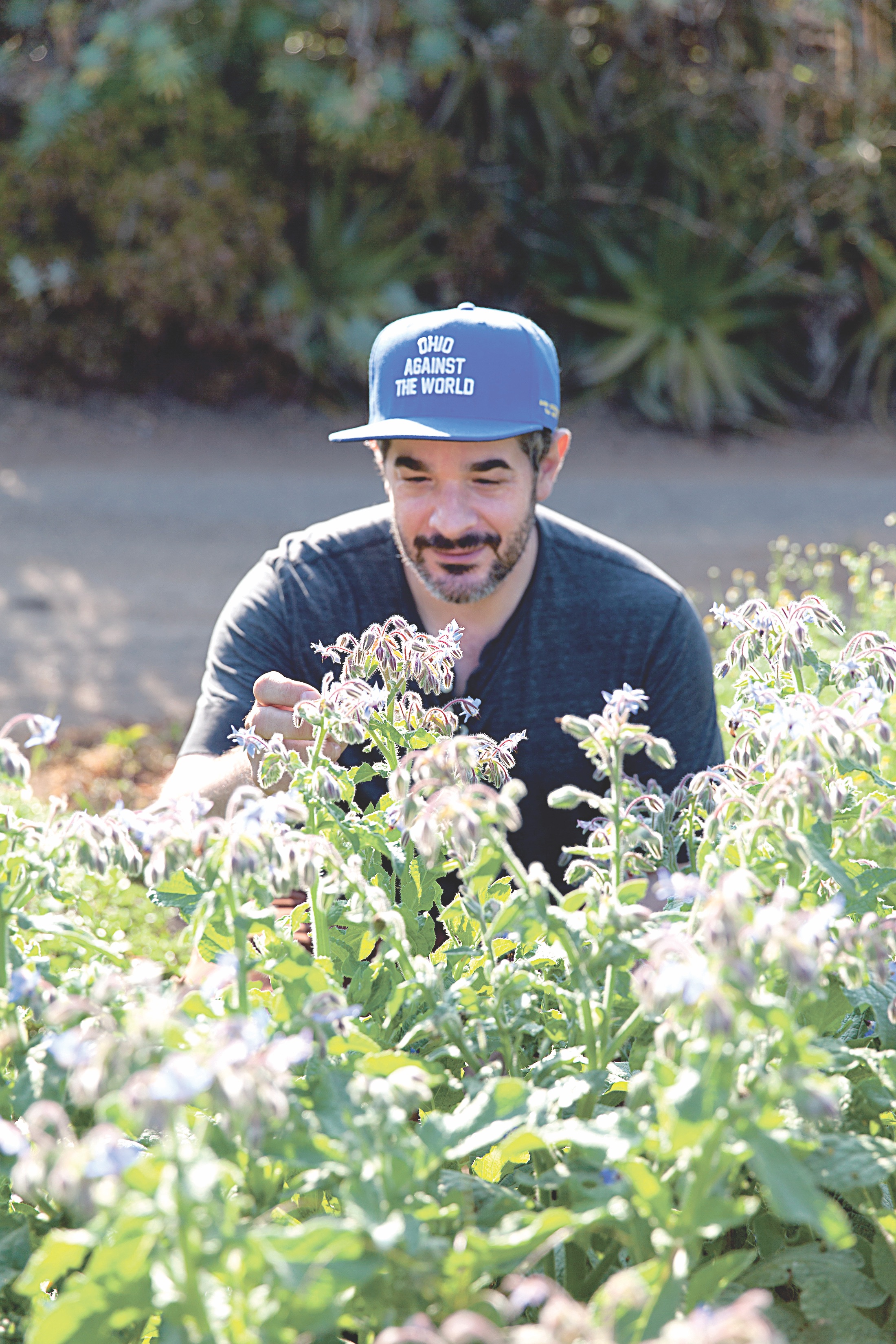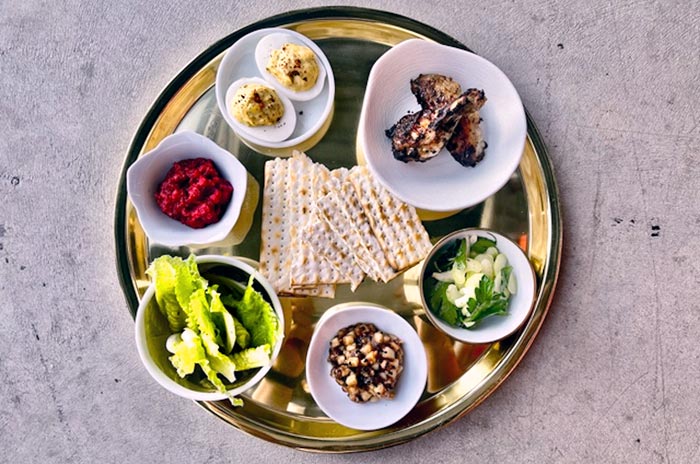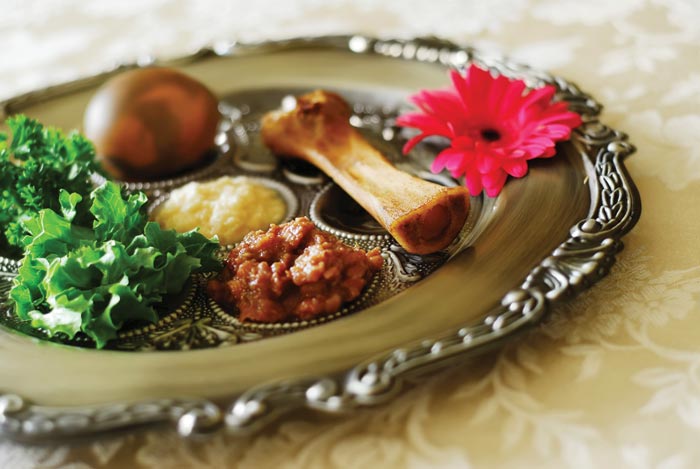 Gold Beets and Nectarines with Hazelnuts and Oregano.
Gold Beets and Nectarines with Hazelnuts and Oregano. Sure, Passover presents an opportunity to contemplate the various meanings of freedom and oppression, historically and in our own lives, yet many of us find ourselves fixating instead on all the things we can’t eat. “How is it Shabbat without chocolate-chunk pretzel challah?” we lament. Or, “No bagels for a week? Look, this is how I shall crawl to my ending!”
We can become like slaves to our love of leavened breadstuffs, to pizza and brownies, to turkey-and-cage-free-egg-white sandwiches from Starbucks. Even those who eschew wheat may find themselves viewing this holiday as little more than an enforced, short-term breakup with their beloved gluten-free morning coffee cake.
Often, we overcompensate by indulging in unhealthy meats and unleavened starches in a weeklong fit of deprivation-fueled pique. It’s easy to get so wrapped up in what we can’t eat that we forget about all of the wonderful things that are still on the menu.
This year, let’s switch the focus from forgoing bread to actively embracing the other fruits of the earth — as in fruit. And vegetables. Passover is an opportunity to explore the bounty of vegetables, the one food group that never shows up on studies as the culprit behind ailments such as heart disease or stroke.
This spring-cleaning holiday, this festival of liberation is the perfect time to free ourselves from what can be mindless, unhealthy eating habits — the chewy granola bars in the car, the Cinnabon at the airport. Eating more vegetables is a way to care for our bodies, a mitzvah itself. Cramming ourselves with chocolate-covered potato chips and processed products with names like “Smokey Flavor Xtra Long Snack” is not a mitzvah, even when they’re kosher for Passover.
It’s easy to get so wrapped up in what we can’t eat, that we forget about all of the wonderful things that are still on the menu.
Jeremy Fox, chef at the Santa Monica restaurants Rustic Canyon, Esters Wine Shop & Bar and Tallula’s, is a master of farmers market cooking. He’s also the author of the recently released ode to things that grow, “On Vegetables: Modern Recipes for the Home Kitchen” (nominated this month for the James Beard award). This beautifully illustrated book has 150 recipes showcasing his “seed-to-stalk” style of gourmet vegetable cooking — including some from items found on many Passover tables, such as horseradish, potatoes and beets.

Fox is in the process of developing a salad based on the iconic Passover flavors in charoset for his next restaurant, Birdie G’s. The new salad will have apples, walnuts and horseradish, dyed with beets. “It’s just an idea right now, but I’d like to work with these classic Jewish flavors and techniques. I’ve always wanted a venue to do that,” he said.
Birdie G’s is slated to open next year. In the meantime, for your vegetable-based Passover dinner, Fox advises thinking in terms of a mezze-style meal of many small plates, rather than creating a vegetarian entrée and side dishes. Include a variety of textures, and consider the flow of flavors across the whole evening. “I would start the meal a little lighter, more acidic and bright, and then get a little richer and heavier as you go,” he said. “So start with bright, raw crunchy salads and then move into roasted and caramelized flavors, things that are richer, or something with a grain. With the hot food, I like to have creamy and crunchy in tandem with each other. If it’s just crunchy, it feels dry.”
Great tasting vegetable dishes also depend on who grows the produce, and how. In “On Vegetables,” Fox lists the farmers he sources from and offers an A-to-Z guide to choosing well. We’re lucky in Los Angeles to have farmers markets every day of the week. This Passover, consider visiting one of them for your seder table.
Here’s a recipe for Passover, adapted from “On Vegetables”:
GOLD BEETS AND NECTARINES WITH HAZELNUTS AND OREGANO
16 baby golden beets (beetroots), greens removed and reserved for another use
3 nectarines
1/4 cup fresh orange juice
1 tablespoon champagne vinegar
1 tablespoon extra-virgin olive oil
1/4 preserved lemon
16 blanched hazelnuts, halved
32 fresh oregano leaves
Preheat the oven to 350 F.
Wash and dry beets. Place in a 12-by-6-inch baking dish with the whole nectarines and orange juice. Cover with foil. Bake until the beets are tender, about 30 to 45 minutes. Let cool uncovered, then peel and halve beets. Toss beets with the champagne vinegar, olive oil and salt.
Halve and pit the nectarines and puree with preserved lemon in blender. Taste and adjust seasoning.
To serve, place nectarine puree around each plate in 8 dollops. Lay a halved beet on each dollop, cut-side up. Place another small dollop of puree on top, followed by a hazelnut half and oregano leaf.
Makes 4 servings.
Wendy Paris is a writer living in Los Angeles. She is the author of “Splitopia: Dispatches From Today’s Good Divorce and How to Part Well.”





















 More news and opinions than at a Shabbat dinner, right in your inbox.
More news and opinions than at a Shabbat dinner, right in your inbox.